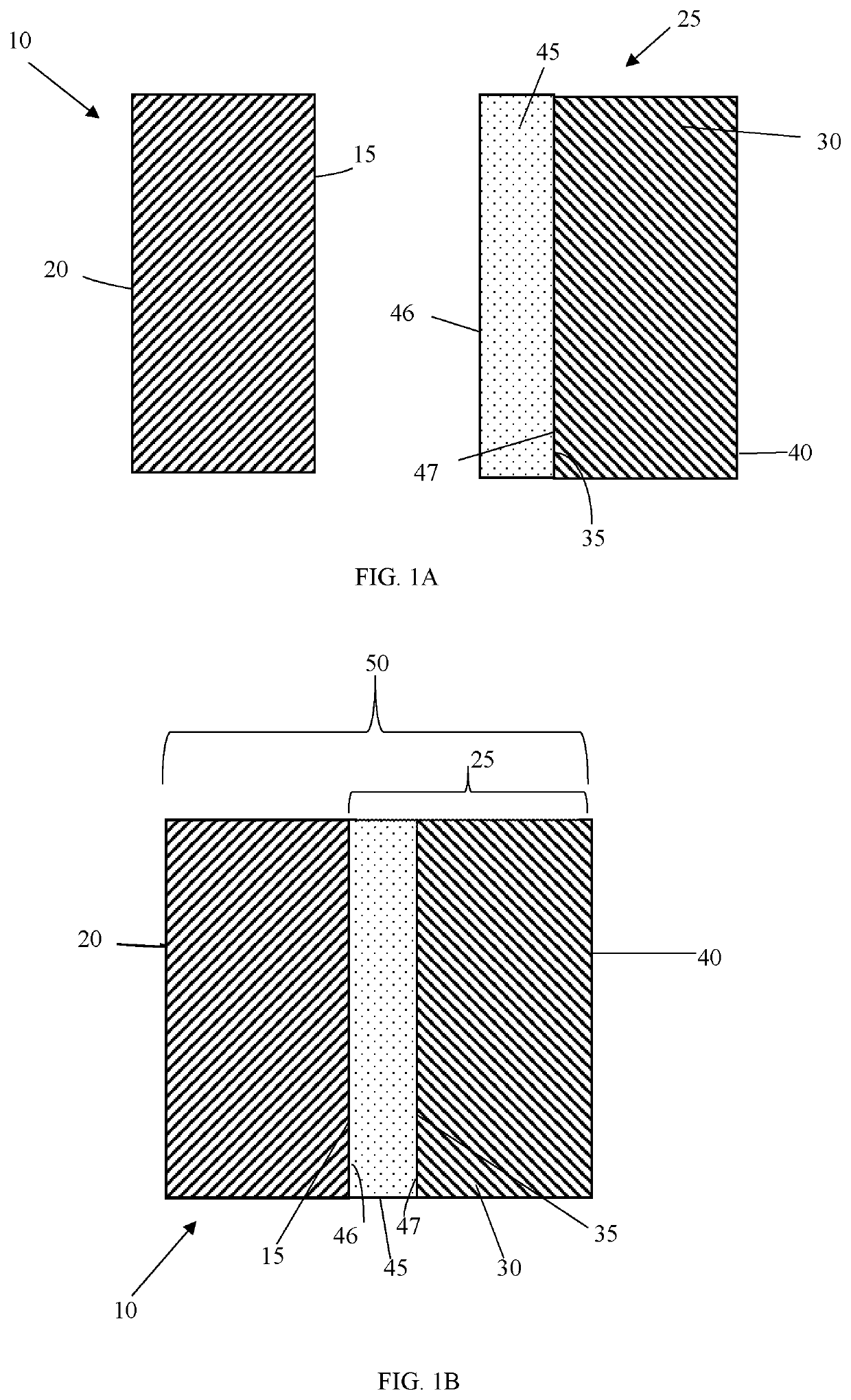Method of making opacifying articles
- Summary
- Abstract
- Description
- Claims
- Application Information
AI Technical Summary
Benefits of technology
Problems solved by technology
Method used
Image
Examples
invention examples 1a and 1b
[0216]An aqueous composition was prepared by combining 19.4 weight % of NEOCRYL® A-6093 binder polymer, 0.9 weight % of TERGITOL® 15-S-7 surfactant, water, and 29.4 weight % of porous particles PX (having 0.1% carbon black in the discrete pores) in a container. The aqueous formulation was mixed with a Cowles blade until all porous particles were well dispersed, then de-gassed to remove large bubbles so there is no foam in this formulation. The resulting mixed aqueous composition was coated using a blade with a 0.024 inch (0.61 mm) gap onto a substrate (described above) and dried at 35° C. to form a dry opacifying layer on the laminate. The dry opacifying layer had a total dry coverage of 201 g / m2 (5.9 oz / yd2) and 0.06 weight % of carbon black. The resulting opacifying element laminate was laminated to the back side of a white woven fabric having a thickness of 0.0076 inches (0.02 cm) with the dry opacifying layer in contact with the fabric back side, to form an opacifying article (I...
invention examples 2a and 2b
[0219]Invention Example 2 was prepared the same manner as Invention Example 1a except porous particles PY contained 0.05% of carbon black in the discrete pores were used. The aqueous composition was coated and dried in the same manner as for Invention Example 1a. The final dry opacifying layer in the opacifying element had a total dry coverage of 201 g / m2 and 0.03 weight % of carbon black. The opacifying element was laminated with the dry opacifying layer in contact with the back side of a white woven fabric to form an opacifying article (Invention Example 2a) according to the present invention.
[0220]A portion of this opacifying article was also flocked by applying an adhesive to the opposing surface of the opacifying element facing away from the fabric, followed by application of 0.1 mm cotton flock onto the adhesive with a hand-held sieve. The flocked surface had a fabric-like feel compared to a non-flocked sample of the same opacifying article.
invention example 3
[0221]Invention Example 3 was prepared in the same manner as Invention Example 1a except a 50 / 50 weight % mixture of porous particles PX and PY was used. The aqueous composition was coated and dried in the same manner as for Invention Example 1a. The dry opacifying layer contained a total dry coverage of 201 g / m2 and 0.04 weight % of carbon black. The resulting opacifying element was laminated to the back side of a white woven fabric with the dry opacifying layer in contact with the fabric back side.
[0222]The optical densities of the various opacifying articles and the colorimetric data of the opacifying elements are shown in TABLE I, wherein all the parameters are as described above. The data for the fabric alone is also shown in the following TABLE I.
TABLE IOpticalDensity(OD)L*a*b*YFabric only0.5484.02.6−10.764.1Invention7.177.82.2−5.152.8Example 1aInvention6.575.72.5−5.449.3Example 1bInvention4.183.52.2−5.963.1Example 2aInvention4.184.12.7−7.564.2Example 2b,FlockedInvention5.480....
PUM
| Property | Measurement | Unit |
|---|---|---|
| Percent by mass | aaaaa | aaaaa |
| Percent by mass | aaaaa | aaaaa |
| Thickness | aaaaa | aaaaa |
Abstract
Description
Claims
Application Information
 Login to View More
Login to View More - R&D
- Intellectual Property
- Life Sciences
- Materials
- Tech Scout
- Unparalleled Data Quality
- Higher Quality Content
- 60% Fewer Hallucinations
Browse by: Latest US Patents, China's latest patents, Technical Efficacy Thesaurus, Application Domain, Technology Topic, Popular Technical Reports.
© 2025 PatSnap. All rights reserved.Legal|Privacy policy|Modern Slavery Act Transparency Statement|Sitemap|About US| Contact US: help@patsnap.com



